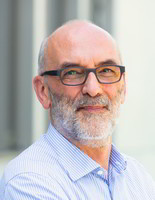Prof. Dr. Rudolf Gross

- Phone
- +49 89 289-14249
- Room
- –
- rudolf.gross@tum.de
- Links
-
Homepage
Page in TUMonline
- Group
- Technical Physics
- Job Title
- Professorship on Technical Physics
- Consultation Hour
- on appointment
As of 1.10.2022, the Faculty of Physics has been merged into the TUM School of Natural Sciences with the website https://www.nat.tum.de/. For more information read Conversion of Websites.
